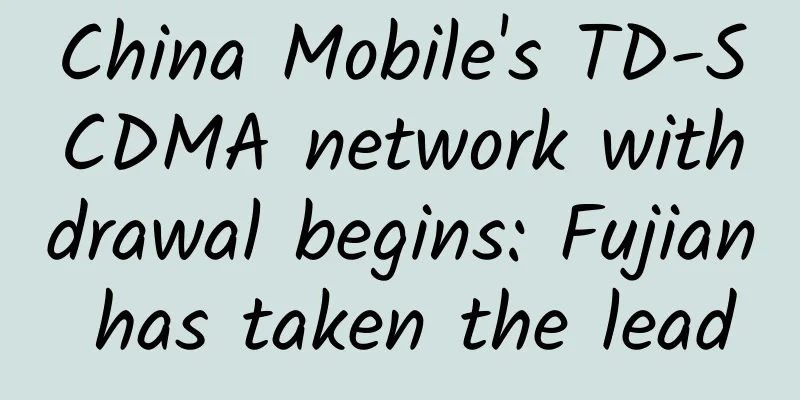Where is the future in the post-5G era?

|
According to the latest news from the 3GPP official website, the 5G R16 version will be officially frozen and released in the near future. This means that a more "complete" 5G standard is about to be released. The construction and development of 5G is about to enter a new stage. I don’t know if you have noticed that since the beginning of this year, except for a wave of attention attracted by the new infrastructure in March, the enthusiasm of all sectors of society for 5G is rapidly fading, and news media reports on 5G have also decreased significantly.
In contrast, last year almost everyone was paying attention to and pursuing 5G. (Photo taken at MWC Shanghai 2019) In fact, this is a normal phenomenon. It does not mean that 5G has begun to "fall out of favor", but it shows that 5G has gradually matured. The technology maturity curve tells us that any technology will have a germination period, an expectation expansion period, a bubble disillusionment period, a recovery period and a maturity period. Technology maturity curve 5G has passed the period of inflated expectations and will inevitably enter a trough and then recover. At this stage, 5G development is gradually getting rid of bubbles, moving away from impetuousness, and getting on the right track. Taking China as an example, 5G engineering construction is in a state of steady progress, and 5G industry applications are also accelerating. From the perspective of network construction, the number of 5G base stations in China has exceeded 240,000 (as of May 2020). By the end of 2020, it is likely to reach 700,000.
5G Base Station Domestic first-tier and second-tier cities have achieved large-scale 5G signal coverage, and most prefecture-level cities and even county-level cities have 5G base stations. Next, many counties and towns will also gradually enter the 5G era. However, 5G will not provide seamless coverage across the country like 4G. It will mainly cover hot spots in densely populated areas. In addition, on-demand coverage will be implemented for demand scenarios such as smart agriculture, smart cities, industrial Internet, and Internet of Vehicles. In short, the 5G network construction strategy is: cover wherever there is a need. From the perspective of coverage locations, the next focus of 5G will be to move from outdoors to indoors. At present, most of the outdoor macro base station sites in large and medium-sized cities have been equipped with 5G AAU antennas as long as conditions permit. Next, operators will strengthen the construction of 5G indoor distribution and optimize signal quality in densely populated areas such as office buildings, shopping malls, and government agencies to achieve deep coverage.
5G Indoor Micro Base Station This is a very difficult task, the construction period will be long and the cost will be high. If the 5G access network is continuously being built and its coverage is continuously being expanded, then the current main task of the 5G bearer network and core network is to upgrade and expand the capacity of existing equipment. Especially for the 5G bearer network, with the increasing number of 5G base stations and 5G users, the pressure on traffic bandwidth will become greater and greater, and it is urgently necessary to expand the bearer capacity. The technical solutions for the midhaul and backhaul of the 5G bearer network have been basically determined by the three major operators and are now being put into commercial use. The technical solution for the fronthaul of the 5G bearer network has not yet been fully clarified, and the industrial chain needs to be further mature. For the 5G core network, at this stage, the three major operators are focusing their main efforts on the sinking of the user plane and the opening of the SA independent networking core network. According to the latest news, the SA core network construction projects of the three major operators are being carried out in full swing, and it is estimated that they will be announced for commercial use around September. By then, 5G core capabilities such as end-to-end network slicing will be perfectly realized, and 5G will also be "gorgeously upgraded."
5G core network equipment In addition to the progress of network construction, we also need to pay attention to the commercial implementation of 5G. In fact, the importance of commercial implementation is far greater than that of network construction. In terms of mobile Internet (internet of people), according to operator statistics, as of May 2020, there were 85 million 5G package users in my country (China Mobile and China Telecom, excluding China Unicom, which has not been announced). By the end of 2020, this number will likely exceed 200 million. At present, flagship mobile phones of various brands in the domestic market already support 5G dual-mode, and 5G mobile phone shipments have approached half of the total mobile phone shipments. Since 5G is not a rigid demand for mobile phone users, there is not much desire to upgrade. The number of 5G package users announced by operators is also quite inaccurate. Currently, the main group of people who upgrade to experience 5G are still young users with certain spending power. The most popular 5G App is still SpeedTest.
SpeedTest The 5G upgrade for most users will depend on the update and iteration of their personal mobile phones. When you change your mobile phone, you can upgrade to 5G. From this point of view, the popularization process of 5G in the personal user market will be much longer than that of 4G. In terms of industrial Internet (Internet of Things), 5G is still being actively promoted in various industry fields such as industrial Internet, Internet of Vehicles, smart cities, smart medical care, and smart agriculture. Operators, equipment manufacturers, and service providers have proposed many solutions that combine 5G with the industry, with many commercial scenarios and mature cases. However, the specific results and market feedback are not very ideal. The investment return cycle of 5G is very long, and we need to give 5G more time to grow naturally. We also need to give industry users more time to gradually understand 5G, accept 5G, recognize 5G, feel the empowerment effect brought by 5G, and finally be willing to pay for 5G. In addition to network construction and commercial implementation, we also need to pay attention to several "weaknesses" of 5G. These weaknesses are likely to influence the development trend of 5G and affect the future direction of 5G. First, it is the coverage effect. We have said before that due to the frequency band, the signal coverage of 5G base stations is not as good as 4G. At present, the 5G base stations we have are mainly outdoor macro base stations, the scale of 5G users is not large, and resources are relatively sufficient. Therefore, the user's 5G network experience should not be too bad. However, once you get indoors (more than 70% of traffic comes from indoors), the operators' indoor distribution has not kept up, and with the number of 5G users continuing to increase, it is hard to say whether the experience can remain the same. If the user experience declines significantly, it will inevitably affect users' trust and acceptance of 5G, and will also affect the motivation and determination of more users to upgrade to 5G. The same is true for the expansion of 5G in the B-end (government and enterprise users) market. Whether it can meet the needs of industry application scenarios and whether it can provide the key indicators promised before (bandwidth, latency, reliability, etc.) in key scenarios remains to be further observed. The coverage of the Sub-6 frequency band is so worrying, not to mention the millimeter wave. At present, our country has no clear plan for the commercial use of millimeter waves, but there are some ultra-large bandwidth application scenarios that still require millimeter waves. When will we be able to commercialize millimeter waves and which fields will give priority to the use of millimeter waves are also key points worthy of attention. Second, it is the energy consumption of the equipment. Xiaozaojun has mentioned this issue many times. At present, the energy consumption of 5G wireless devices is significantly higher than that of 4G. Although the gap between the two is narrowing due to the efforts of equipment manufacturers, this problem has not been completely solved. The huge energy consumption has brought great pressure on the electricity bills of operators. It is said that some local operators have secretly shut down some 5G base stations to save costs because there are fewer 5G users. There is no doubt that this is not conducive to the development of 5G. 5G energy consumption is a technical issue, and technical problems need to be solved with technical means. The energy consumption of 5G is due to the operation of the device itself and the heat dissipation. Heat dissipation can be divided into active heat dissipation and passive heat dissipation. Passive heat dissipation is to dissipate heat through fans and air conditioners. This method only treats the symptoms but not the root cause. Equipment manufacturers and operators now focus on reducing power consumption on the equipment itself. On the one hand, more advanced processes and materials are used to reduce equipment power consumption. On the other hand, AI artificial intelligence is introduced to dynamically adjust the workload of the equipment itself to further reduce energy consumption. AI will use algorithms and big data to determine the characteristics of coverage scenarios, predict business load trends, and then dynamically adjust power consumption. The third thing that needs attention is the 2/3G network decommissioning, re-cultivation and frequency clearing. As 5G construction deepens, operators will inevitably accelerate the withdrawal of 2G/3G networks to reduce their own operation and maintenance burden. At the same time, network withdrawal and frequency clearance can also release more frequency resources for 4G/5G use. It is not an easy thing to withdraw from the network. At present, there are still hundreds of millions of 2G/3G users in our country, including IoT card users. Withdrawal from the network will inevitably affect the use of these users, and may lead to user backlash or even user loss. Operators need to formulate appropriate network withdrawal strategies and proceed steadily to minimize the impact on users as much as possible. The fourth is operation and maintenance pressure. In fact, we have already mentioned the operation and maintenance pressure. 5G is an extremely complex network. In the case that 2G/3G network withdrawal has not yet been completed, the superposition of old technologies and new technologies has increased the complexity of the overall network architecture. Such a network will definitely not work if it still relies on the previous manual operation and maintenance methods. In recent years, equipment manufacturers have been working hard to simplify the operation and maintenance of their products, and operators have also been actively exploring intelligent operation and maintenance. However, due to various reasons, the change in the operation and maintenance work model and the change in the thinking of operation and maintenance personnel have been slower than expected. The slower the transformation, the shorter the time window. If operators do not accelerate the transformation of operations, their own transformation may be affected. In short, 5G is a big test for operators. Real money has already been spent. These investments are a huge pressure for operators whose revenues are declining. In the short term, there is no return at all (the investment in 4G has not yet been recovered). Faced with the severe situation, operators are striving for change. We can observe that the organizational structure, strategic direction and business model of operators are constantly changing. In the face of crisis, they have also learned to stick together for warmth. For example, China Telecom and China Unicom share and build together, and China Mobile and China Broadcasting Corporation join forces. It is still unknown whether these proactive changes will produce the desired effect. But if you don't change, you will die. There is always a glimmer of hope for change. Finally, I want to say that the commercial use of 5G is not the end of everything, but the beginning. With the freezing of the R16 version and the commercial use of the SA core network, we are about to enter the post-5G era. Let us wait and see where this giant ship carrying the hopes of all communications people will go. |
>>: Changing the quality of cultural experience with 5G
Recommend
The latest data on 5G construction is released: huge potential and promising future
As the COVID-19 epidemic is gradually under contr...
It has become an industry consensus that multi-antenna technology is an important evolution direction of LTE
At the beginning of 2017, multi-antenna technolog...
Yan Wangjia, a member of the National Committee of the Chinese People's Political Consultative Conference, submitted five proposals to the two sessions, calling for strengthening information security supervision
[51CTO.com original article] On March 3, the firs...
A brief introduction to spatial transformer networks
The first model I got to implement as part of my ...
[5.1]spinservers: $89/month-Dual E5-2650Lv3, 64G memory, 1.6TB SSD, 10Gbps bandwidth, Silicon Valley data center
spinservers launched a one-week Labor Day promoti...
The latest version of WeChat has been updated to fix these problems
According to the normal update rhythm, WeChat iOS...
Justhost newly launched New York VPS, multiple data centers in the United States/Russia/UK/Germany/Hong Kong, China, etc. starting from $1.16/month
JustHost.asia sent information about the new VPS ...
Understanding the differences and application scenarios of TCP and UDP protocols in one article
[[276674]] TCP (Transmission Control Protocol) an...
"Rehabilitate" the Ethernet all-optical network! China Construction Association publishes the first standardization document for smart park construction
"Smart Park" is not a new concept. In t...
In addition to "new infrastructure", what else can operators do for "stability and security"
Solidly carrying out the "six stability"...
5G and 6G networks will empower emergency responders and smart city projects, researchers say
While 5G and 6G networks could help first respond...
5G has nothing to do with WiFi
A quick note: the Wi-Fi that all of our connected...
From CDN to edge computing, computing power evolution accelerates again
The COVID-19 pandemic has accelerated the global ...
These specialized and innovative "little giants" gather in the Tianfu Software Park Industrial Cluster
On September 2, the Beijing Stock Exchange was es...
![[5.1] Megalayer limited time sale, E3-1230/8G US & Hong Kong server starting from 199 yuan/month](/upload/images/67cabed77271f.webp)








